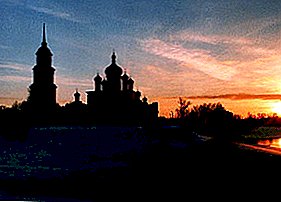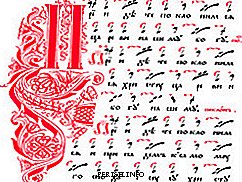 Russian choral music of the X-XVI centuries is an important layer that serves as the basis for the further development of Russian music and culture in general.
Russian choral music of the X-XVI centuries is an important layer that serves as the basis for the further development of Russian music and culture in general.
At the previous stage of development - in ancient Russia - folk art occupied a dominant role in the life of society, since developed secular forms of professional music simply did not exist. Even among the highest feudal strata, and in the princely court, one could hear folk songs, which were distributed by representatives of the song traditions — buffoons.
The development of spiritual singing
Everything changed with the adoption of Christianity as the state religion in 988 and as a result, the strengthening of ties with Byzantium. These events greatly influenced the further cultural development of our state.
In opposition to the folk song, church music was developed, which initially was heavily influenced by Byzantium. Spiritual chants were recorded in Church Slavonic. This first stage of professional singing is evidenced by the preserved ancient musical hook manuscripts of the end of the 11th-13th centuries, which are still not amenable to exact decoding.
Together with Christianity, the church singing system was borrowed - osmoglasie, which began with the custom of singing songs for a special voice in each of the 8 days of the feast of Easter. A little later, this custom spread to 8 weeks of the holiday period.

“Come worship” is an example of a znaman notation.
Over time, the whole system of church music was modified, as a result of which ancient Russian art acquired its original form - znamenny singing or Znamenny chantwhich developed as part of osmoglasiya. Znamenny chant was based on popevkah - short motifs in the tertz or quart range. The whole chanting rejoice included 3-4 such songs. The melody of znamenny chant was smooth, wavy and monophonic. It was performed only by a male choir in unison.
The branch from the znamenny singing was kondakarnoe singing, the creator of which is considered Roman Sladkopevets. These are festive spiritual chants with a large number of melodic ornaments and long chants of syllables. Chant was clarified already in the course of singing.
Folk singing creativity
As a result of the internecine wars and the subsequent capture of Russia by Khan Baty the center of culture of the state turned out to be the independent and very rich trading city of Novgorod, which became the center of luxury. From this point on, folk-singing creativity acquires a special role. The epic genre - epic, which glorified the heroes and moral and ethical folk ideals, is becoming widespread.
After the final victory over the Mongol-Tatar yoke and the reunification of the Russian lands around Moscow in the XV century. a new stage in the development of national art and culture begins.
In folk art to replace bylina is coming historical songin which it is told about real heroes and events. More appears lyric songThe distinctive features of which were the improvisational nature of the melodies, as well as the depth and emotionality of the images. The origin of Russian choral sub-vocal polyphony is connected with the lyrical song.
The heyday of choral culture of Russia
In the capital of Russia at the court of Ivan III a chorus of sovereign singing clerks was established, who constantly accompanied the tsar and sang during palace ceremonies and cathedrals. At this time, variants of znamenny chant appear, such as demestvenny and travel singing.

“Singers on the choir” - a picture of the artist V.E. Makovsky
By 1441 are the first mention of demestvennyh chants. Their repertoire is separate chants of Russian church singing books: Personal Care, Oktoykha and Irmology, Holidays. In the future, this kind of chants became widespread in polyphony. The most prominent master of such singing is Vasily Rogov.
Traveling chant was used in stichera, and later in the Circulation. For a long time this chant was considered the pinnacle of church singing. It was based on the modified chanting of the znamenny chant. The nature of the slow solemnity of this form of singing gave long notes and a special rhythmic step, similar to the dotted line. Traveling chants were performed during the procession of the cross, the ceremonial entry of the clergy into the altar or during the procession to the springs. Their content was elusive because of the great breadth of the chant.
Also began to appear options for chants associated with personal creativity or singing traditions. An example of this are Kiev, Yaroslavl, Vladimir chants, as well as Christians and baskets (by the names of the authors) chants.
At the same time, early forms of polyphony appear - 2 and 3, less often 4-voice singing, the so-called line singing. It was quite closely associated with folk music.
The string combination was called "bottom", "path", "top", "demestvo":
- Way - this is the leading voice of the chants, and its performers were called travelers.
- Top they wrote over the path, and it was performed above the main voice. Sang it foremen.
- The path was written and executed below the lead - bottom. Artists were called lowlands.
- In the case of 4-part singing, a melody was written above the path, called dementiaand she performed demezennikami.
The lines of the score were written alternately in red and black ink, and the path was always red. This was done for readability.

Leave Your Comment